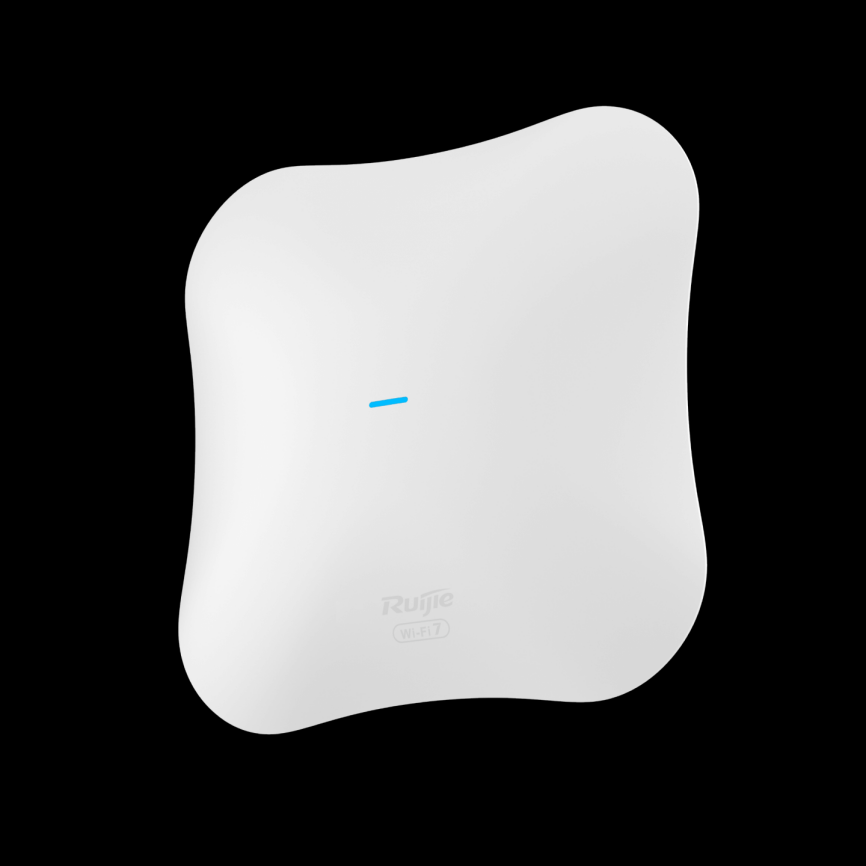Wi-Fi 5, Wi-Fi 6, and Wi-Fi 7 are wireless network communication standards. In simple terms, they represent successive iterations, developed on the foundation of Wi-Fi 4 with each upgrade bringing improvements to transmission speeds, performance, and stability. These advancements are designed to meet the growing demands of users for faster and more reliable wireless networks.

Technological Evolution of Wi-Fi 5, Wi-Fi 6, and Wi-Fi 7
The technological progression of Wi-Fi 5, Wi-Fi 6, and Wi-Fi 7 reflects significant advances in wireless network technology.
Wi-Fi 5 (802.11ac)
Release Date: 2013
Key Features:
- Uses the 5GHz frequency band, offering higher data transfer speeds and lower interference.
- Introduces wider channel bandwidths and advanced modulation techniques, improving spectral efficiency.
- Supports MU-MIMO (Multi-User Multiple Input Multiple Output) technology, allowing multiple devices to transmit data simultaneously, increasing network capacity.
- Data transfer rates: Maximum single antenna speed of 867Mbps, theoretical maximum of 6.9Gbps (achieved through multiple antennas and channel bonding techniques).
Wi-Fi 6 (802.11ax)
Release Date: 2019
Key Features:
- Supports both 2.4GHz and 5GHz frequency bands, providing broader coverage.
- Introduces OFDMA (Orthogonal Frequency Division Multiple Access) technology, enabling multiple users to share the same channel, improving spectral efficiency and supporting more concurrent users.
- Upgrades MIMO technology, supporting more spatial streams and higher data transfer speeds.
- Introduces BSS Coloring and TWT (Target Wake Time) technologies, reducing latency and improving energy efficiency.
- Data transfer rates: Maximum single-stream rate of 1,201Mbps, maximum rate of 9.6Gbps (achieved through multiple antennas, OFDMA, and higher-order modulation techniques).
Wi-Fi 7 (802.11be)
Release Date: The standard is expected to be finalized by the end of 2024. Some manufacturers, such as Reyee, have already launched related products. As the first SMB industry company to introduce Wi-Fi 7 technology to the market, Reyee has released three new Wi-Fi 7 products and widely deployed them in regions where the 6GHz band is open, such as the United States, Singapore, Thailand, Saudi Arabia, and Canada. These products are known for their advanced technology, including independently developed features like one-click optimization, RE Mesh, AP standalone portal, and three-tier roaming, all of which are unique in the industry and widely trusted.

Key Features:
- Introduces the 6GHz frequency band, providing wider channel bandwidths and higher data transfer speeds.
- Supports bandwidths up to 320MHz and 4096-QAM (Quadrature Amplitude Modulation) technology, further improving spectral efficiency and data transfer rates.
- Enhances coordination and scheduling between multiple APs and multi-user MIMO technology, allowing more devices to transmit data simultaneously, thereby increasing network capacity and performance.
- Introduces the Multi-Link technology, offering higher data transfer speeds and lower latency.
- Data transfer rates: Maximum transmission speed can reach 46Gbps, far surpassing Wi-Fi 6.
Additionally, new Wi-Fi standards generally maintain backward compatibility with older standards. This means that Wi-Fi 7-enabled devices can typically connect to Wi-Fi 6 or Wi-Fi 5 routers, but may not fully leverage the performance advantages of the new standard.
Differences in Application Scenarios of Wi-Fi 5, Wi-Fi 6, and Wi-Fi 7 Differences in Application Scenarios of Wi-Fi 5, Wi-Fi 6, and Wi-Fi 7
Wi-Fi 5 (802.11ac) Application Scenarios
Home Networks: For most home users, Wi-Fi 5 provides sufficient data transfer speeds and coverage to meet everyday internet needs, such as web browsing, watching HD videos, and online gaming.
Small Office Spaces: In small office environments, Wi-Fi 5 delivers stable network connections, supporting multiple devices for simultaneous connections and data transmission, making it suitable for daily office tasks.
Wi-Fi 6 (802.11ax) Application Scenarios
Home Entertainment: Wi-Fi 6 offers an improved network experience, supporting high-bandwidth applications like HD video streaming and online gaming, fulfilling the demand for high-quality entertainment content in households.
Smart Home: With the growing adoption of smart home devices, Wi-Fi 6 better supports simultaneous connections and cooperation between multiple devices, enhancing the performance and efficiency of the entire home network.
Home Office: For remote workers, Wi-Fi 6 provides faster and more stable network connections, improving work efficiency.
Public Spaces: In public locations such as airports, coffee shops, and libraries, Wi-Fi 6 offers faster speeds and better connection stability, improving the public internet experience for users.
Wi-Fi 7 (802.11be) Application Scenarios
Extended Reality (XR) Applications: Wi-Fi 7 provides extremely low latency and high bandwidth, which is crucial for real-time response and high data transfer speeds in extended reality experiences, including Virtual Reality (VR), Augmented Reality (AR), and other applications.
Ultra-High-Definition Video Streaming: With throughput of up to 23Gbps, Wi-Fi 7 can support video streaming services at 8K resolution or higher, approximately three times the throughput of Wi-Fi 6, delivering a superior streaming experience for users.
Enterprise Applications: In corporate environments, Wi-Fi 7 offers more efficient wireless connections, supporting needs such as office automation, wireless conference systems, and remote collaboration, improving overall business efficiency and collaboration.
Internet of Things (IoT) Devices: With the growing number of IoT devices, the high speed and low latency of Wi-Fi 7 will support seamless connectivity and collaboration among a large number of IoT devices, enhancing the performance and efficiency of the entire IoT network.
High-Density Network Environments: Wi-Fi 7 introduces new spectrum management mechanisms, allowing multiple links to operate simultaneously and enabling coordinated scheduling between multiple access points (APs). This reduces interference and increases air interface resource utilization, which is especially important in high-density network environments.
From Wi-Fi 5 to Wi-Fi 6 and then to Wi-Fi 7, wireless network technology has undergone significant evolution. Each generation has introduced new technologies and features to improve data transfer speeds, network capacity, spectral efficiency, and energy efficiency, while maintaining backward compatibility to ensure a smooth transition for users to the next-generation technology. These advancements not only meet the growing demand for wireless networks but also lay a solid foundation for future wireless applications.
Featured Articles
- Networking Tools for Retail Stores: The Core Value of Cloud-Managed APs












